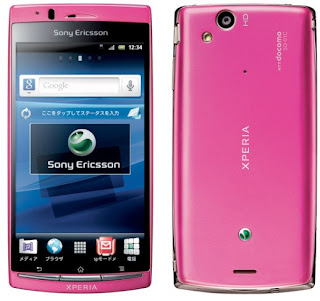Sony Xperia L Review and Specification
The handset doesn't have a spectacular specification, but it all works well as a package. You get a 1GHz dual-core processor, 1GB RAM and Android 4.1 - not much on paper, compared to the near-2GHz monsters we're now seeing on premium smartphones, but we've no complaints about the handset's performance. Apps open and shut with a snap and animations are silky-smooth.
As we expected, the phone's performance in our Sunspider 1.0 JavaScript benchmark wasn't spectacular. It completed the test in 2,646ms using the default Chrome browser, which is twice as long as we saw from the Xperia SP with its 1.7GHz dual-core chip. Chrome is slow in Sunspider, but even with the faster Dolphin browser we only saw 1,564ms, which is very much a middling result.
Subjectively, this average benchmark score didn't make much difference to the phone's web browsing performance. The Maps app glides smoothly under your finger, and there's barely a hesitation while panning smoothly around web pages - only a barely perceptible slowdown when scrolling past a large image. When compared side by side with a Samsung Galaxy S3, the more powerful S3 had slightly smoother browsing, but there's not much in it.
You shouldn't have a problem with gaming, as the Xperia L's processor produced a competent performance in the 3DMark benchmark. 4074 is a much better score than we expect to see from a phone at this price, and is up with much more expensive phones such as the HTC One X+. It's also quicker in 3D games than the Samsung Galaxy S3, showing you're getting better 3D performance than last year's premium handsets.
We were also impressed with the Xperia L's screen. Again, its 854x480 resolution is pretty standard for a phone at this price, and you have to zoom in to read text on web pages, but we saw bright whites and punchy colours. The Xperia L's LCD display doesn't have the true blacks of an AMOLED screen, but blacks are still very deep. It's a high-quality display for a relatively inexpensive handset.
The phone's design certainly divided opinion in the office. In an era of slimmer smartphones, it's unashamedly chunky, with a large chin and a concave back with a pleasing rubberised finish. The phone's protruding edges make it feel like it would survive most tumbles, as the screen would be protected unless you dropped the phone straight on its face.
However, some weren't sure about the hard edges at the bottom of the handset, which can dig into your hand - we think it's something you'll quickly get used to, and is only really a problem if you're used to a phone with rounded edges such as the Galaxy S3.
Sony bills the Xperia L as the "camera experts' camera phone", and we were impressed by the performance of its backside-illuminated camera sensor. A backside-illuminated sensor has the sensor's circuitry on the rear rather than at the front, so there's no wiring in the way of light reaching the sensor.
This should lead to better image quality under low light, and the Xperia L takes some of the best low-light photos we've seen, with far more detail and less than noise than the Samsung Galaxy S4's shots. Daylight photos were acceptable if not spectacular. Contrast was impressive, with no sign of overexposure in lighter areas even on a sunlit day, but details became muddy when we zoomed in, showing the limits of the Xperia L's eight megapixels.
Video quality was acceptable under reasonable lighting, but under low light the frame rate dropped right down, making footage seriously jerky - this isn't a phone to film gigs or nights out.
We were impressed with the Xperia L. It has a good screen and a fast operating system, as well as excellent low-light photo (if not video) performance. It's not especially cheap on contract, but provided you're willing to pay for the phone up-front, there's nothing that can touch it for less than £300. It's a Budget Buy.
Category: Android, Android mobile, iPhone, phone












0 commentaires